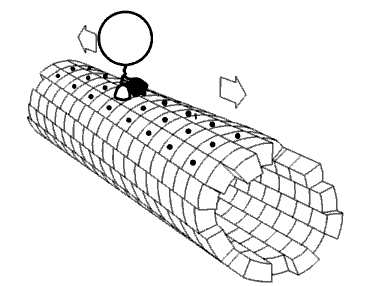
Photo from academic.microsoft.com
Bacterial motion is strongly affected by the presence of a surface. One of the hallmarks of swimming near a surface is a defined curvature of bacterial trajectories, underlining the importance… Click to show full abstract
Bacterial motion is strongly affected by the presence of a surface. One of the hallmarks of swimming near a surface is a defined curvature of bacterial trajectories, underlining the importance of counter rotations of the cell body and flagellum for locomotion of the microorganism. We find that there is another mode of bacterial motion on solid surfaces, i.e., self trapping due to fluid flows created by a rotating flagellum perpendicular to the surface. For a rod-like bacterium, such as Escherichia coli, this creates a peculiar situation in that the bacterium appears to swim along a minor axis of the cell body and is pressed against the surface. Although a full hydrodynamic theory is still lacking to explain the self-trapping phenomenon, the effect is intriguing and can be exploited to study a variety of biophysical phenomena of swimming bacteria. In particular, we showed that self-trapped E. coli cells display a chemotaxis response that is identical to the classical rotation assay in which antibodies are used to physically "glue" a flagellum to the surface.
Journal Title: Biophysical journal
Year Published: 2018
Link to full text (if available)
Share on Social Media: Sign Up to like & get
recommendations!